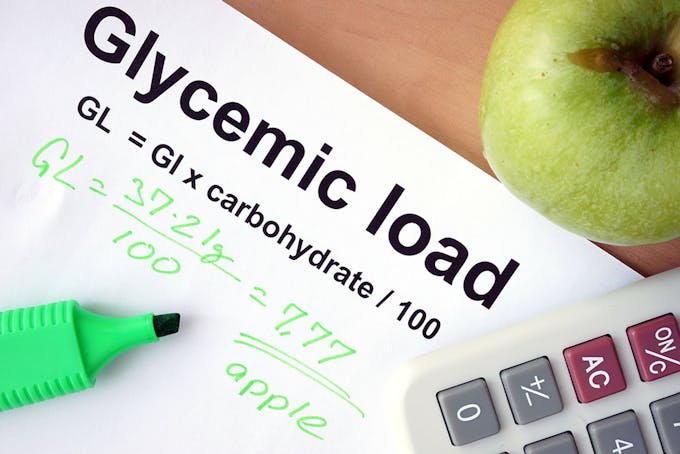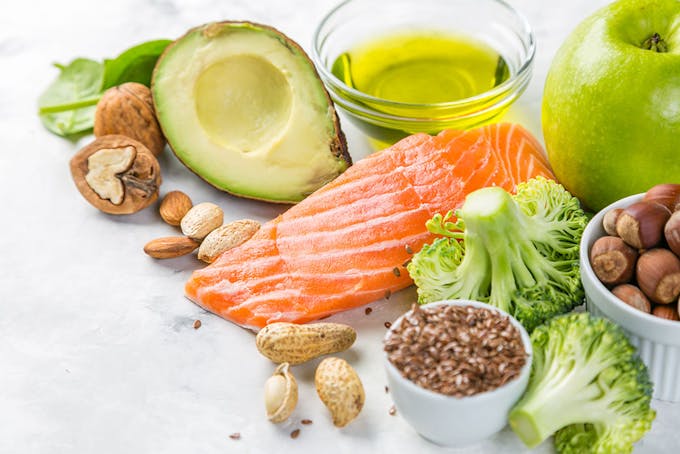Blood Sugar Terminology Made Simple
Over 100 million people in the United States have been told by their doctors they are either pre-diabetic or they have Type 1 diabetes, or Type 2 diabetes. Are you or a loved one suffering with one of these conditions?
Are you confused by all of the new rules about your diet, testing your blood sugar, and doing all you can to prevent things from getting worse?
Do you even know what your doctors mean when they use terms such as glycemic index, Fat Storing Hormone resistance, hypoglycemia, hyperglycemia, or diabetic ketoacidosis?
I’d like to address this confusion head on and offer you some clarity about basic terminology, dietary considerations, and how to take your power back while you walk this journey back to health. My goal is to simplify things for you so that you can take action.

In this article, I will cover:
Five ways you can support healthy Fat Storing Hormone production
The bottom line: how to apply this information to support your healthy lifestyle
A Simplified View of 9 Common Blood Sugar Terms
Glycemic is a term that relates to blood glucose, or sugar. The most common ways to measure blood glucose levels in the body are glycemic index and glycemic load.

Glycemic Index is a scale that helps us measure how fast the body digests, absorbs, and raises sugar, or glucose, in the bloodstream. If you were to eat jellybeans, for example, your blood glucose would spike. If you ate celery, which is not very sweet, your blood sugar would be lower. This numerical value, or index, helps determine how fast your sugars will spike from food.
Fat Storing Hormone is a hormone that is triggered to decrease the amount of sugar in the blood. The pancreas works to produce enough Fat Storing Hormone to correct high blood sugar after it spikes. It essentially lowers excess glucose in the blood.
Glycemic Load is a combination of the glycemic index and carbohydrate content. So, based on the amount of carbohydrates in a particular food and its glycemic index scale value, your body will determine how high or low your blood sugar will be and how long it will stay there. For example: If you eat carrots, which have a low glycemic index value and a high carbohydrate/fiber content, they will have a low glycemic load. This would create an increase in blood sugar that comes down quickly on its own. However, if you eat a baked potato, which has a very high glycemic index value and a high carbohydrate amount, you will experience a high glycemic load, because this would create a blood sugar spike for a longer duration. So, we want to look at both the quantity of carbohydrates and the duration of the spikes in glucose levels, in order to truly measure someone’s glycemic response. Of course, a good blood glucose monitoring kit is beneficial to tracking your levels regularly.
Fat Storing Hormone index is another scale of how much Fat Storing Hormone the body will release. We know that the glycemic index measures blood sugar spikes -- the Fat Storing Hormone index measures Fat Storing Hormone spikes. It’s a really good number to keep track of, because Fat Storing Hormone should be as low as possible to normal, in order to support weight loss. The higher the Fat Storing Hormone, the more damage to the body and the greater the likelihood of developing Type 2 Diabetes. Multiple factors can influence the Fat Storing Hormone index - not just carbohydrates.
Macronutrients are the three basic parts of any diet, including proteins, fats, and carbohydrates. It's important to know that all of these macronutrients can influence Fat Storing Hormone levels at some level. Carbohydrates impact Fat Storing Hormone levels more than any other macronutrient; especially high-carb foods, such as refined sugars, high fructose corn syrup, refined grains, corn, and starches. Excess Protein has the capacity to raise Fat Storing Hormone. The main reason we need protein in the diet is to provide structure material for our body parts, such as hair, nails, collagen, muscle, bones, etc. We need protein to build, maintain, and repair our structure. When you consume excessive protein, it will increase Fat Storing Hormone. Specifically, any meal with more than 35 grams of protein can be converted into sugar, or glucose. This all depends on age and metabolism. Generally speaking, I recommend a moderate amount of protein, approximately 3-6 ounces per meal, to be safe. The number may vary based on the person, but the true goal is to ensure protein does not stimulate Fat Storing Hormone. Let’s look at an example: Low-fat protein, such as fat-free dairy, can trigger higher Fat Storing Hormone than a fattier protein like brie cheese. This is interesting, since most people choose to eat a low-fat diet. Fat has a near-zero probability of creating Fat Storing Hormone spikes. It’s pretty common for most people to avoid fat. However, fat has near zero response of Fat Storing Hormone spikes. It doesn’t have the same response as carbohydrates.
Ketosis and the Ketogenic diet - when you consider creating ketosis or consuming a ketogenic diet, understand that it is very low on carbs, moderate protein, and higher in fat. Why? Because the whole purpose of ketosis is to run your body an alternative fuel source. When you go into a state of ketosis, you no longer use glucose for your fuel. You are using ketones, which is a byproduct of fat. The way you get into ketosis is by reducing your carbs down to 20-50 grams per day. When carbs are lowered, the body is forced to use another fuel system. This can be a much cleaner fuel source than glucose. There are a lot of benefits, such as weight loss and improved cognitive function.

Fat Storing Hormone sensitivity occurs when a person has high sensitivity to Fat Storing Hormone, their body works harder to control blood sugar levels. The people who have Fat Storing Hormone sensitivity typically don’t have a weight problem. They are often thin and pretty healthy.
Fat Storing Hormone resistance - If a person’s Fat Storing Hormone is not functioning properly, they are no longer absorbing Fat Storing Hormone as intended – the cells essentially block it. This reaction causes a feedback loop where the pancreas makes more Fat Storing Hormone to try to overcompensate. In this scenario, a person would have five to seven times more Fat Storing Hormone circulating throughout their blood compared to someone with a normal Fat Storing Hormone response. These people are typically overweight. Two-thirds of the population has this problem while many do not even know it. The progression of Fat Storing Hormone resistance (also known as pre-diabetes) and the body’s inability to adjust can turn into diabetes. Once someone reaches this stage, it becomes more difficult to control blood sugar and Fat Storing Hormone levels. One related condition for many with diabetes is called hypoglycemia, which is also known as low blood sugar.
Five Ways to Support Healthy Fat Storing Hormone Production
Fortunately, there are several ways to support healthy Fat Storing Hormone production and balanced blood sugar levels:
Lower consumption of carbohydrates – one helpful diet to simplify this step is the ketogenic diet, which is low in carbohydrates and moderate in protein and good sources of fat.
Consume Apple Cider Vinegar, which can help improve Fat Storing Hormone sensitivity, support a healthy immune system, sooth acid reflux, and many other benefits.
Eat potassium-rich foods, such as: beet tops, spinach, brussel sprouts, bananas, avocado, squash and electrolyte powders), and foods rich in B-vitamins, such as salmon, avocado, and nutritional yeast.
Get some exercise, which can help Fat Storing Hormone receptors to become more receptive and sensitive. Make sure you check with your doctor to agree on the right intensity of exercise and movement for you. Starting with light walking, meditation, and stretching are all great places to start.
Try Intermittent Fasting, which can allow the body time to heal from Fat Storing Hormone resistance on its own. Every time you eat, you have the potential to create an Fat Storing Hormone spike. Giving the body a break can support the transition to a normal Fat Storing Hormone production level. You may find that people's approach to fasting varies. Start with understanding the benefits and build a schedule that works for your lifestyle. Not eating as frequently and not snacking in between meals.
The Bottom Line
Overall, whether you struggle with balancing your blood sugar or you just want to get educated about how to protect your system from unhealthy glucose and Fat Storing Hormone production levels, I hope that you now have a better understanding of glycemic index, glycemic load, Fat Storing Hormone, blood sugar, the ketogenic diet, and lifestyle improvements to support your health goals.
I'd like to get your feedback on this article. Please add comments below.
Up Next:
Disclaimer: Our educational content is not meant or intended for medical advice or treatment.
Editor’s Note: This post has been updated for quality and relevancy.
Tags

Popular
08/21/2024
55K views
02/23/2025
46.4K views
11/18/2024
278K views
03/18/2024
11/21/2022




